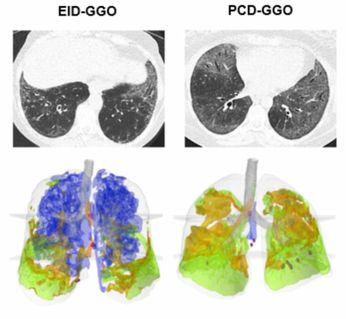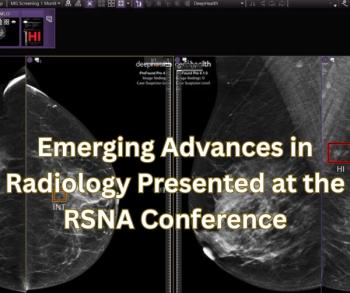
Photon Counting CT May Facilitate Earlier Diagnosis of Spontaneous Intracranial Hypotension
In a comparative study of energy-integrating detector CT myelography versus photon-counting detector CT (PCD-CT) myelography for the detection of cerebrospinal fluid-venous fistulas (CVFs) in cases of spontaneous intracranial hypotension, PCD-CT myelography demonstrated 10 to 19 percent higher sensitivity rates with reviewing radiologists.
Emerging research suggests that photon-counting detector computed tomography (PCD-CT) myelography provides higher sensitivity and nerve root sleeve discernibility for diagnosing cerebrospinal fluid-venous fistulas (CVFs) in patients with spontaneous intracranial hypotension than energy-integrating detector CT (EID-CT) myelography.
For the retrospective study, recently published in the
Nerve root sleeve discernibility with PCD-CT myelography ranged between 8 to 54 percent higher than EID-CT myelography for three reviewing radiologists, according to the study findings. The researchers also found that sensitivity rates for PCD-CT myelography were 16 percent higher on average (58 percent) than EID-CT myelography (42 percent) with 7.3 lower specificity rates on average (91.3 percent vs. 98.7 percent).
Utilizing a scale of 0-100, the reviewing radiologists also perceived higher image quality with PCD-CT myelography (74.3 percent on average) in comparison to an average of 55 percent for EID-CT myelography.
“PCD-CT myelograms exhibited higher subjective discernibility of spinal nerve root sleeves and higher overall image quality for all three readers. In addition, all three readers showed significantly higher sensitivity for definite CVFs for PCD-CT myelograms than for EID-CT myelograms, without a significant difference in specificity or accuracy,” wrote Timothy J. Amrhein, M.D., an associate professor of radiology and director of the spine intervention service at Duke University Medical Center in Durham, N.C., and colleagues.
While the researchers acknowledged higher false positives for CVF among all three reviewing radiologists for PCD-CT myelography, they suggested the study’s reference standard criteria may have been a contributing factor, pointing out successful treatment for possible CVFs for most of the patient who had a PCD-CT myelogram.
“Regardless of this possibility, given the high morbidity during the challenging and potentially prolonged diagnostic workup for CVFs, increased sensitivity at the expense of potentially lower specificity may be warranted in this clinical context,” emphasized Amrhein and colleagues.
(Editor’s note: For related content, see “
Beyond the inherent limitations of a retrospective single-center study, the authors acknowledged the small cohort size and a long interval between EID-CT myelography and PCD-CT myelography in some of the cohort patients. The researchers also conceded a possible patient selection bias with the study’s focus on patients who had at least two myelograms to determine a possible cerebrospinal fluid (CSF) leak and noted a lack of universal acceptance for the definite CVF attenuation threshold (> 70 HU) utilized in the study.
Newsletter
Stay at the forefront of radiology with the Diagnostic Imaging newsletter, delivering the latest news, clinical insights, and imaging advancements for today’s radiologists.




























